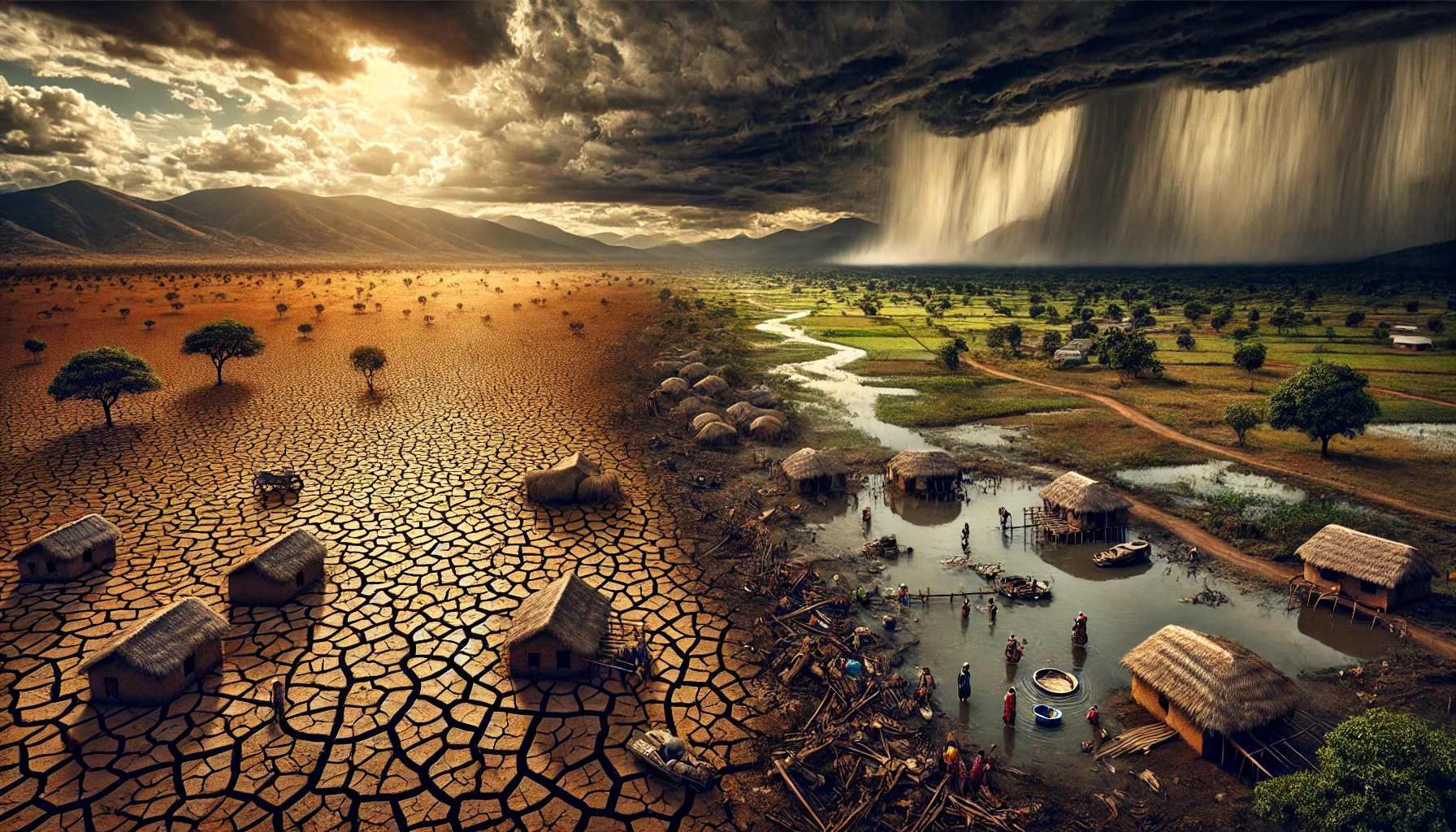UN-Backed Report Warns of Worst Global Drought Crisis in Modern History
“Drought is a silent killer,” said UNCCD Executive Secretary Ibrahim Thiaw. “It creeps in, drains resources, and devastates lives in slow motion. Its scars run deep.”

A new UN-supported report has painted a stark picture of the escalating global drought emergency, describing the crisis as the most damaging and far-reaching in recorded history. Titled "Drought Hotspots Around the World 2023–2025", the report underscores how climate change, deforestation, and unsustainable water use are fueling an intensifying drought catastrophe that spans continents—crippling agriculture, collapsing ecosystems, and pushing millions toward hunger and displacement.
Produced by the U.S. National Drought Mitigation Center (NDMC) and the United Nations Convention to Combat Desertification (UNCCD), with input from the International Drought Resilience Alliance (IDRA), the report draws on a vast pool of data from governments, scientists, and media outlets across the globe. It delivers an urgent call for coordinated global action and proactive drought management strategies to avert further humanitarian and environmental devastation.
“Drought is a silent killer,” said UNCCD Executive Secretary Ibrahim Thiaw. “It creeps in, drains resources, and devastates lives in slow motion. Its scars run deep.”
A Slow-Moving Global Catastrophe
“This is not a dry spell,” stressed Dr. Mark Svoboda, co-author and NDMC Director. “This is a slow-moving global catastrophe, the worst I’ve ever seen.”
The report reveals how recent droughts are not only more frequent but also longer, more intense, and increasingly interlinked with climate extremes such as heatwaves, fires, and floods. Vulnerable populations—especially women and children—face the most severe consequences, from food insecurity to loss of livelihood, displacement, and health crises.
Drought Hotspots and Impacts
Africa: Hunger, Crop Failure, and Energy Collapse
-
Over 90 million people in Eastern and Southern Africa are experiencing acute hunger due to prolonged drought.
-
Zimbabwe’s corn crop declined by 70% in 2024; 9,000 cattle died due to starvation and thirst.
-
Somalia reported an estimated 43,000 drought-related deaths in 2022. In 2025, 4.4 million Somalis—a quarter of the population—face crisis-level food insecurity.
-
Zambia’s Zambezi River fell to just 20% of its average flow, shutting down its Kariba Dam hydroelectric plant to 7% capacity, triggering 21-hour blackouts that disrupted essential services across the country.
Mediterranean: Agriculture and Livestock at Risk
-
Spain suffered two years of extreme drought by late 2023, slashing olive oil production by 50% and doubling retail prices.
-
In Morocco, a 38% drop in the sheep population by 2025 prompted a royal decree to cancel Eid al-Adha sacrifices.
-
In Türkiye, drought worsened groundwater depletion, leading to the emergence of sinkholes, endangering communities and damaging aquifers beyond repair.
Latin America: Amazon Under Siege, Global Trade Disrupted
-
The Amazon Basin saw record-low water levels, causing mass fish and dolphin deaths, threatening biodiversity and human water supplies.
-
The Panama Canal reduced ship transits from 38 to 24 vessels per day, disrupting global trade routes and delaying the export of U.S. soybeans. British supermarkets faced fresh produce shortages and price hikes.
Southeast Asia: Crop Supply Chains in Peril
-
Drought hit rice, coffee, and sugar crops in Thailand and India, leading to a 8.9% spike in U.S. prices of sugar and sweets during 2023–2024.
-
Agricultural exports declined, affecting global markets and increasing food insecurity in importing nations.
Recommendations: Urgent Steps Toward Resilience
The report concludes with a pressing call to shift from reactive, crisis-driven responses to proactive drought preparedness strategies. It outlines five key recommendations:
-
Enhance Early Warning Systems Real-time drought monitoring and forecasting must be prioritized to guide policy and relief interventions, especially in fragile food systems.
-
Implement Nature-Based Solutions Ecosystem restoration—such as reforestation, watershed management, and use of indigenous crop varieties—can help build natural buffers against drought.
-
Invest in Resilient Infrastructure Expanding off-grid renewable energy, water-saving technologies, and decentralized storage systems can reduce dependence on vulnerable centralized utilities.
-
Support Gender-Responsive Adaptation With women disproportionately affected, drought response efforts must address gender equity in resource access, safety, and decision-making.
-
Strengthen Global Cooperation From managing transboundary river basins to securing maritime trade corridors, international partnerships are essential to prevent cascading crises.
Building a Drought-Resilient Future
The report aligns with efforts led by the World Meteorological Organization (WMO) and Global Water Partnership, which operate the Integrated Drought Management Programme (IDMP). This initiative works closely with 45 partners to build drought resilience and promote sustainable water governance.
In parallel, the Early Warnings for All initiative, championed by the WMO, is focused on expanding climate information services to vulnerable communities, ensuring that no region is left unprepared for the next drought disaster.
As global temperatures continue to rise and rainfall patterns grow erratic, droughts are expected to become longer, deeper, and more deadly. The message of the report is clear: the world must prepare—urgently, equitably, and collaboratively—to withstand what is no longer a distant threat, but a present and escalating crisis.










